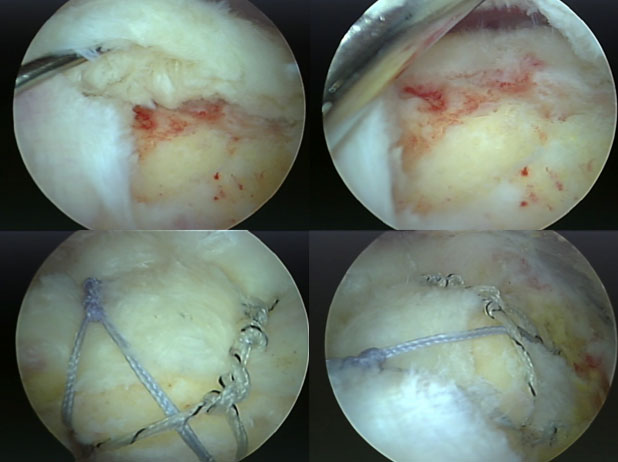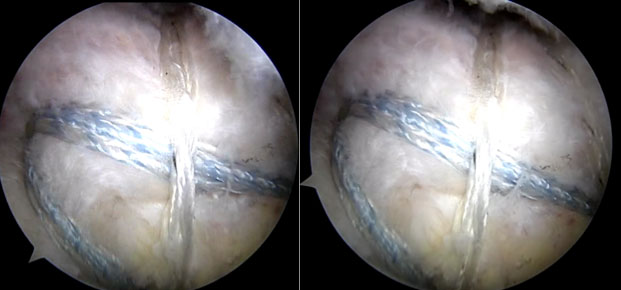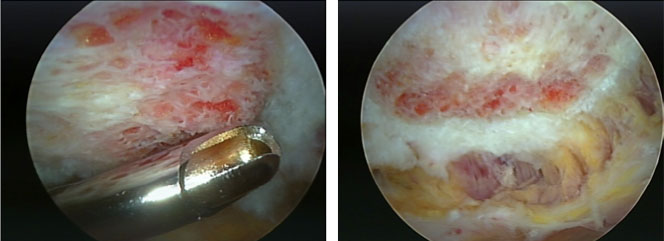An Overview of Rotator Cuff Injuries
The rotator cuff, located within the shoulder, is made up of tendons and muscles. These shoulder elements connect the upper arm bone with the shoulder blade and they are in place to help hold the ball of the upper arm bone firmly to the shoulder socket. All of these biological functions come together to create the greatest range of motion of any joint in the human body.
Rotator cuff injuries are very common. They can occur when any irritation or damage affect the rotator cuff muscles or tendons. Many activities can lead to this type of injury including falling, lifting, repetitive overhead arm activities and degeneration of the rotator cuff tendon. The incidence of rotator cuff damage increases with age.
There are 3 distinct rotator cuff injuries:
- Tendinitis
- Bursitis
- Strain or tear
Tendinitis occurs when the rotator cuff tendons become inflamed due to overuse or overload. Athletes will often find themselves with this condition if they are involved in daily or routine overhead sports such as tennis or basketball. Bursitis is an inflammation that occurs when the fluid-filled sac (bursa) between your shoulder joint and rotator cuff tendons become irritated. This can also be a cause of overhead activity or overuse of the shoulder muscle. If the first two conditions are not dealt with, a person could experience a strain or tear in the rotator cuff region, which will require a more drastic treatment approach.
Rotator Cuff Tear Patterns Video

Treatment of Rotator Cuff Injuries
Non-Surgical
Rotator cuff injuries are very common problems and can many times be healed without treatment. If a patient has a mild rotator cuff injury, it is important to keep the hurt shoulder inactive with plenty of rest. Apply ice daily and use an anti-inflammatory medicine to help with any swelling and pain.
If the shoulder does require surgery, minimally-invasive arthroscopic surgery can usually repair the milder degree rotator cuff injury. In the event arthroscopic surgery does not work or is not recommended due to a more severe rotator cuff injury, there are other options that will treat the condition.
Surgical
‘Double-Row’ Arthroscopic Rotator Cuff Repair
For patients who have significant injuries to the rotator cuff, or who are experiencing recurrent shoulder problems and defects after open and/or arthroscopic surgery has been performed, a double-row arthroscopic rotator cuff repair might be recommended. The double-row arthroscopic repair technique typically improves the overall quality of the rotator cuff restoration process. ‘Double row’ refers to the way the tendons are repaired—with a double row of sutures rather than just a single row.
Rotator Cuff Repair Video
Rotator Cuff ‘Healing Response’ Technique
The rotator cuff healing response technique is a novel procedure that uses the body’s own stem cells and bone marrow to help repair damaged rotator cuff tendons. This arthroscopic procedure involves making tiny “microfracture” holes in the bone; the blood clot from the bone that releases blood captures the end of the injured muscle and eventually reattaches the ligament back to the bone. No sutures are needed with this repair technique so patients have rapid recoveries.
Tendon Transfer for Failed Rotator Cuff Repair
Sometimes, open or arthroscopic rotator cuff surgery fails to work. In a massive rotator cuff tear good results can occur through a tendon transfer. A tendon transfer is a surgical procedure by which a tendon and its muscle are moved from one location to another. This procedure is completed so that lost function of the shoulder can be regained. This procedure requires technical skill from the surgeon and is more of an undertaking than basic rotator cuff repair surgeries; it is often a last step or salvage surgery.
For additional information on rotator cuff injuries, please contact the orthopedic practice of Dr. Peter Millett.
Related Articles
What is a Rotator Cuff Tear and What are the Symptoms?
My Rotator Cuff Surgery Failed. Can You Help?
Rehabilitation Program for Patients With Irreparable Massive Rotator Cuff Tears (MRCT)
Rotator Cuff Injuries FAQ
1. What does it feel like to have a torn rotator cuff?
Typically, a torn rotator cuff will cause pain in the front and side of the shoulder that radiates down the side of the arm. The pain may be present at rest and is usually worse with overhead activities such as lifting or reaching. Patients with a torn rotator cuff may also experience pain at night and when trying to sleep on the affected shoulder. Weakness and difficulty performing routine activities such as combing one’s hair or reaching behind the back may be present.
2. How do you sleep with a torn rotator cuff?
It is common for patients with a torn rotator cuff to have problems sleeping. Before going to bed, icing the injured shoulder for 15 to 20 minutes can help reduce pain and inflammation. When prescribed, taking an anti-inflammatory such as ibuprofen can help reduce inflammation. Adjusting sleep position can help ease pain. Sleeping in the reclined position may be more comfortable than lying flat. There are a few ways to sleep in a reclined position:
- Using several pillows behind your back, while lying in the bed or couch
- Sitting in a comfortable recliner with an armrest
Patients can also try lying flat on their back with the injured arm propped up with a pillow. Using a pillow may reduce stress and pressure on the injured side. Patients can also try to lie on the uninjured side.
Ultimately, the most effective way to get rid of the night pain is to have the rotator cuff tear surgically repaired.
3. How do rotator cuff tears occur?
Due to the extreme mobility in the shoulder joint, the tendons of the rotator cuff are susceptible to tears. Rotator cuff tears can occur from acute traumatic injuries, from overuse and repetitive motion, from tissue degeneration, and from shoulder impingement.
- An acute traumatic injury is typically caused by a fall on an outstretched arm, lifting heavy weight awkwardly, or from a blow or collision to the shoulder.
- Overuse injuries occur from repetitive motions that occur in overhead sports or work.
- Degenerative tears occur as people age when the makeup of the tendons deteriorates. Repetitive overhead work or lifting can contribute to this type of tearing as well.
- Rotator cuff tears can also be associated with shoulder impingement. Shoulder impingement is a painful pinching of the tendons that occurs from narrowing of the subacromial space most typically from bone spurs or an abnormally shaped acromial bone. Structural and functional issues can lead to impingement in the shoulder and ultimately a rotator cuff tear.
4. What are rotator cuff tear symptoms?
Rotator cuff symptoms can include:
- Pain when reaching overhead
- Dull ache deep in the shoulder
- Night pain
- Weakness in the arm
- Disrupted sleep, particular on the injured side
- Reduced range of motion in the shoulder
5. How do you know if you have torn your rotator cuff?
Only a doctor can definitively diagnose a rotator cuff tear, but there are a number of symptoms that are associated with a torn rotator cuff. Rotator cuff tears can happen in acute events such as a fall on an outstretched arm, a sports injury, or a motor vehicle accident. After an acute injury, the onset of rotator cuff symptoms may be instantaneous. With overuse injuries, the onset of symptoms may occur gradually. Pain can be dull and achy, especially when reaching over head or during sleep. Weakness may or may not be present. As the tears get larger, weakness typically becomes more common and may even occur with activities of daily living such as combing one’s hair or brushing one’s teeth. In some cases, there may be feelings of catching or locking in the shoulder as the torn tendon edges catch on bony surfaces.


